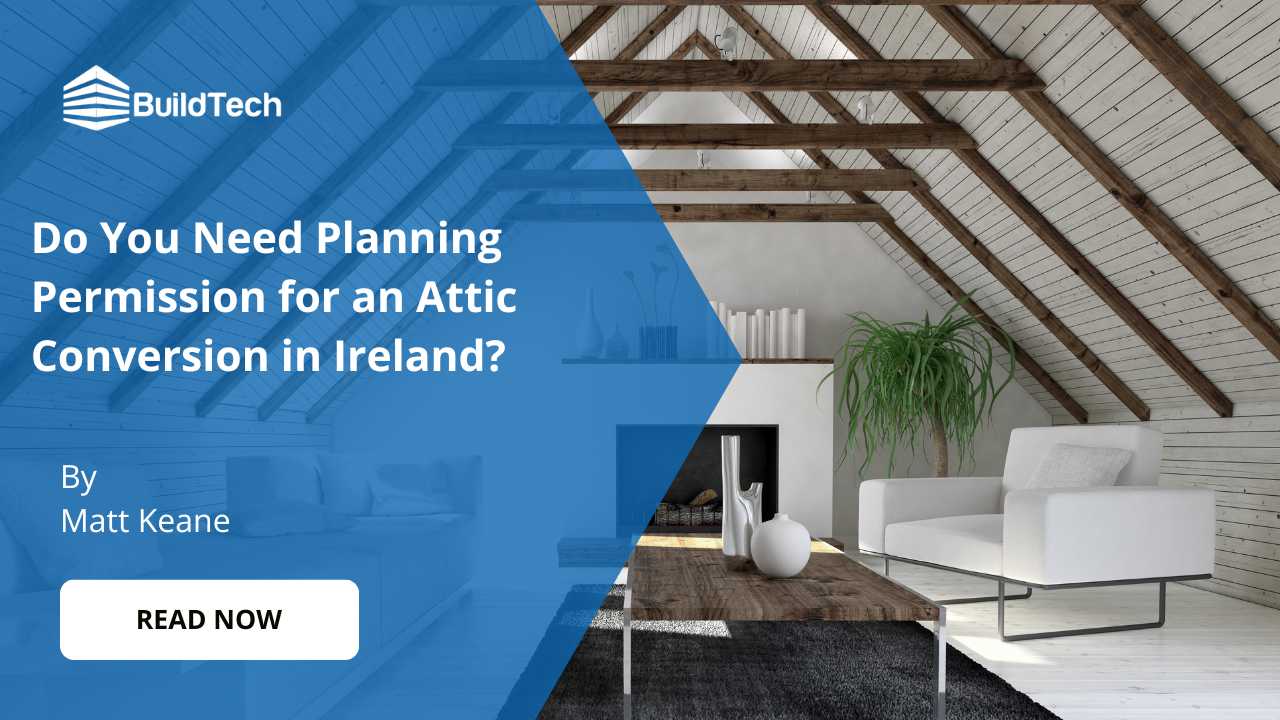Planning a build or extension in Ireland involves many steps. Understanding the design and construction process can help you make informed decisions. It’s useful to explore your options and set clear goals from the start.
A design and build service brings together planning, design, and construction in one process. This can help reduce delays and simplify coordination. Each project is different based on the size of the space and the work required.
If you're considering a new build or extension, BuildTech is here to assist. We can help you get started and answer your questions.
In this blog, we’ll explore what factors influence the costs, provide average price ranges, and share tips on budgeting your project. From materials to labour, we’ll cover everything you need to know to get started. Let’s get started.
5 Key Factors Affecting Design and Build Costs in Ireland
When planning a design and build project, several factors can impact the overall cost. Knowing these can help you prepare better and avoid surprises.
Let's explore the key factors affecting costs in Ireland.
Project Size and Complexity
The size and complexity of your project play a major role in determining the cost. Larger projects or those with complex designs will naturally cost more due to the increased amount of work and materials required. Bigger and more complex projects mean higher expenses.
Location
Where your project is located in Ireland can significantly influence costs. Projects in urban areas tend to be more expensive due to higher land and labour costs. Location matters when it comes to budgeting your project.
Material Costs
The choice of materials can greatly affect the budget. High-quality, durable materials are more expensive but can offer better longevity and aesthetics. Choosing the right materials impacts both cost and quality.
Labour Costs
Labour costs can vary depending on the availability of skilled workers and the complexity of the job. Skilled labour may cost more, but it ensures quality workmanship.
Regulatory and Compliance Costs
Meeting Ireland’s building regulations and compliance standards can add to the overall cost. Regulations ensure safety and quality but come with additional expenses.
What is the Typical Building Costs per Square Metre?
Constructing a house in Ireland comes with costs that differ based on location and the type of house.
A survey by the Society of Chartered Surveyors Ireland (SCSI) in 2021 indicated that the typical cost per square metre is €1,813. However, these costs can vary widely due to factors such as location, project size, and material choices.
4 Different House Types and Their Costs
In Ireland, various house types come with their own building costs. Below are some common types of houses and their estimated construction costs:
Detached House
A detached house is a standalone property with no shared walls. The cost to build a detached house in Ireland ranges from €1,500 to €2,500 per square metre.
Semi-Detached House
A semi-detached house shares a wall with another house. Building a semi-detached house in Ireland typically costs between €1,200 and €1,800 per square metre.
Bungalow
A bungalow is a single-story home. The cost to build a bungalow in Ireland falls between €1,200 and €1,800 per square metre.
Two-Story House
A two-story house features two floors. Constructing a two-story house in Ireland generally costs between €1,500 and €2,500 per square metre.
Average Rebuilding Cost for Different House Types in Different Regions
To give a clearer picture of building a house in Ireland, here is a cost breakdown for a 150-square-metre detached house:
Land Purchase
The price of land varies based on its location and size. For a typical site, the estimated cost is around €30,000.
Foundation Costs
Foundation costs depend on the type and complexity of the foundation. For a 150-square-metre detached house, the cost is approximately €15,000.
Building Structure
Building structure costs include the frame, roof, and walls. For a house of this size, the estimated cost is €60,000.
House Rebuild cost
House rebuilding costs, costs for garages range from €21,548 for a single attached garage to €38,544 for a double attached garage.
Note that the rebuilding rates quoted here, which include VAT, are for estate-type homes only and should not be used for other house styles such as one-off homes in the countryside or period properties. The figures are a minimum base cost guide for house insurance purposes.
Inside Work
Inside work covers plumbing, electrical, heating, and insulation. The estimated cost for these tasks is about €35,000.
Finishing Touches
Finishing touches include flooring, painting, tiling, and decorating. For a 150-square-metre detached house, these costs are estimated at €25,000.
Emergency Budget
It's smart to set aside money for unexpected expenses during construction. The estimated contingency cost for this size house is €15,000.
What Are the Additional Costs To Consider?
Apart from the main construction costs, there are other expenses to account for when building a house in Ireland:
Planning Permission Charges
Before starting construction, you need planning permission from your local authority. These fees can range from €65 to €1,000, depending on the type and location of the development.
Building Control Charges
These fees, paid to the local authority, ensure your house meets building regulations. They can range from €2,000 to €4,000, based on the project's size and complexity.
VAT Expenses
Value Added Tax (VAT) is applied to all building materials and labour, with the standard rate in Ireland being 23%.
How to Budget for Your Design and Build Project?
Budgeting for a design and build project is essential to ensure everything goes smoothly. By planning ahead and considering various factors, you can avoid surprises and stay on track.
Here are some helpful tips to guide you.
Initial Planning
Start by outlining your project's scope and objectives. This helps you understand what you need and allows you to prioritise. A clear plan is the foundation of a successful project.
Unexpected Expense Planning
Always set aside some extra funds for unexpected issues. This ensures you won't be caught off guard by any surprises. A contingency fund can save you from stress later on.
Choosing the Right Contractor
Select a contractor with a good reputation and relevant experience. They can provide valuable insights and help you avoid common pitfalls. The right contractor makes a big difference.
Financing Options
Explore different financing options that fit your needs. This can include personal savings, loans, or other financial products. Finding the right financing option helps you manage costs effectively.
Regular Reviews
Conduct regular reviews of your budget and project progress. This helps you stay on track and make adjustments as needed. Regular check-ins keep your project on course.
By following these tips, you can budget effectively for your design and build project, ensuring a smoother process and a successful outcome.
Conclusion
This blog covers factors such as project size, location, and materials, alongside average costs for residential and commercial builds. Additionally, budgeting tips were provided to ensure a smooth planning process.
For professional assistance and accurate cost estimates, contact BuildTech. Their expertise in design and build projects will help you manage expenses effectively and ensure successful project completion. Reach out to BuildTech today to get started with confidence and clarity.


















